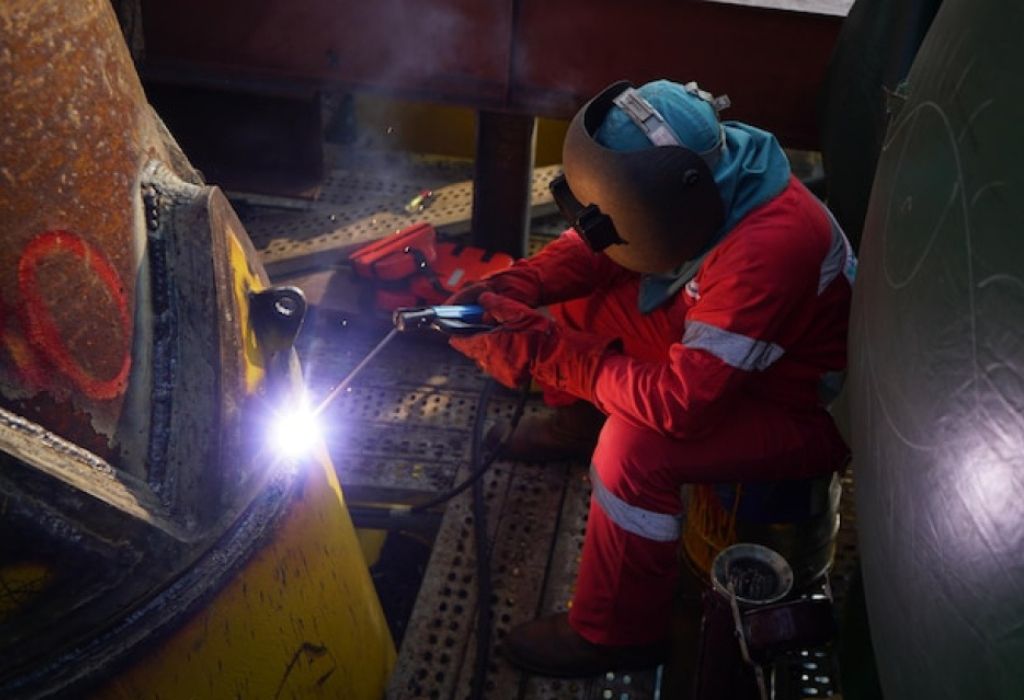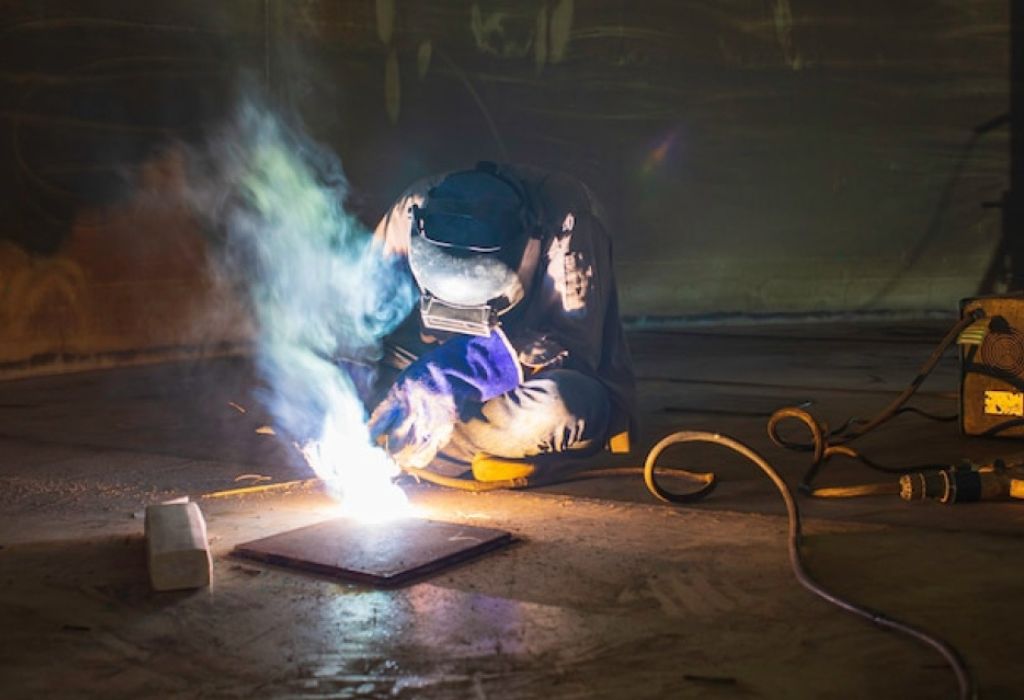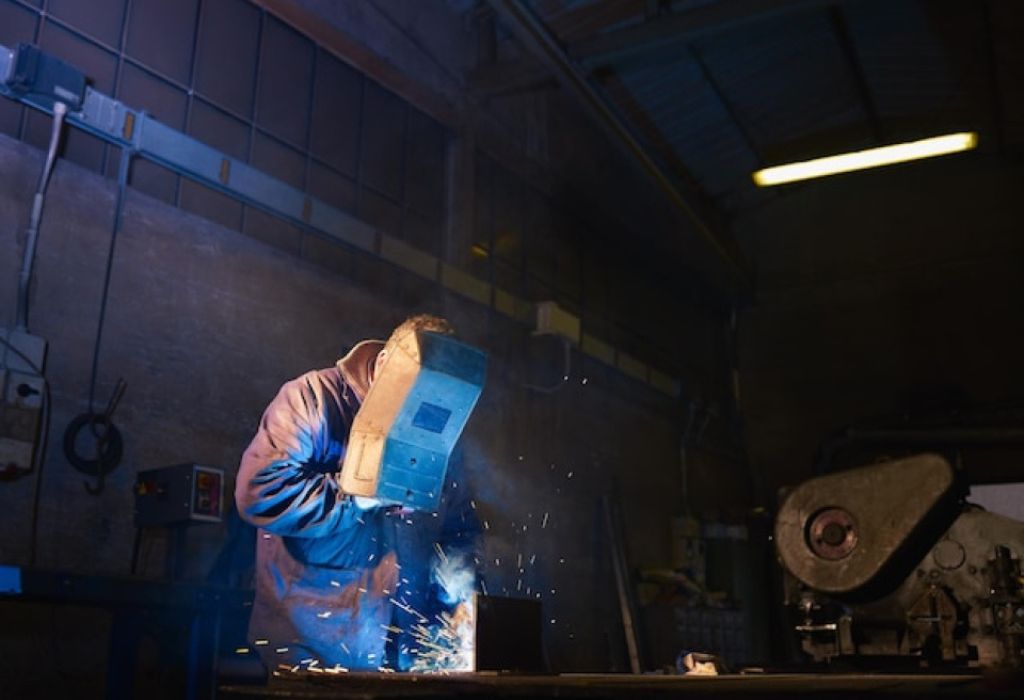A welder in a small fabrication shop sees a posting for nuclear outage work and wonders how long it would take to qualify for such a demanding role.
The promise of higher pay, travel opportunities, and working on critical energy systems sparks curiosity but also raises questions about the path ahead.
Becoming a nuclear welder is not as simple as passing a basic welding test.
It requires code-level skills, strict qualifications, and clearance processes that go beyond what most tradespeople experience.
The time commitment can feel uncertain, and many aspiring welders struggle to find a clear answer to how long the journey actually takes.
The benefit of this path is compelling. Nuclear welders often earn significantly more than the average welder, with the U.S.
Bureau of Labor Statistics reporting that the median pay for welders was $48,940 in 2023, while nuclear specialty welders can make 30–50% more .
The demand is steady too, as the U.S. operates over 90 nuclear reactors with regular outages requiring skilled welders .
The challenge lies in navigating a rigorous process. Training programs, code certifications, background checks, and radiation safety courses all add time to the timeline.
For some, it may take just 18 months with focused preparation, while others may need 3–4 years depending on their starting point and background.
This guide breaks down the realistic steps, timelines, and skills needed to answer the key question: how long does it take to become a nuclear welder?
Quick Answer: Timeline at a Glance

For most welders, the journey to becoming a nuclear welder takes between 18 months and 4 years, depending on prior welding experience, certifications, and the employer’s training program.
The pathway usually involves completing a welding training program, gaining work experience, passing nuclear-specific welding codes, and obtaining security clearances. Each of these steps adds to the timeline, and the pace depends on individual dedication and the opportunities available.
Employers and contractors working in nuclear facilities often require welders to complete additional safety and radiation training, which can extend the preparation period.
How fast can I become a nuclear welder?
The fastest timeline is around 18 months for experienced welders with prior certifications.
What is the average timeline for most welders?
Most take about 2–3 years, including training, work experience, and certifications.
Can it take longer than 4 years?
Yes, especially for those starting without welding knowledge or needing multiple certifications.
Do employers provide nuclear-specific training?
Yes, many nuclear contractors train welders on site, but you must first qualify with core welding skills.
Does location affect how long it takes?
Yes, areas with active nuclear plants or contractors may offer faster placement opportunities.
What Makes Nuclear Welding Unique?
Nuclear welding stands apart from standard fabrication or construction welding because of the precision and safety standards required. Welds in nuclear facilities are often critical joints in pressurized systems where even the smallest flaw can compromise safety.
This means welders must demonstrate exceptional consistency, cleanliness, and control, often passing multiple tests under different conditions. Many nuclear welds also require TIG or orbital welding on stainless steel and other alloys that demand skill and patience.
Radiation exposure and security considerations also add unique layers to the job. Welders in nuclear settings often undergo specialized radiation safety training and background checks before being allowed on-site.
Why is nuclear welding different from regular welding?
It involves stricter codes, advanced techniques, and safety requirements.
What materials are common in nuclear welding?
Stainless steel, nickel alloys, and specialized metals for high-pressure systems.
Is TIG welding common in nuclear work?
Yes, TIG welding is widely used because of its precision and clean results.
Do nuclear welders work under stricter inspections?
Absolutely. Welds are often tested with x-ray or ultrasonic inspections.
Does radiation affect welding practices?
Yes, welders must follow safety protocols to limit exposure while working in nuclear facilities.
Step 1: Welding Training and Education
The first step to becoming a nuclear welder is completing a welding training program, which may be through a trade school, community college, or union apprenticeship. These programs typically last 6 months to 2 years, depending on the depth of training.
Students learn the fundamentals of SMAW, MIG, TIG, and pipe welding, all of which are important for nuclear applications. Those who pursue additional certifications early often shorten their timeline to nuclear readiness.
How long is welding school?
Most programs last 6–12 months, but advanced training can take 2 years.
Is a degree required for nuclear welding?
No, but trade school or certifications are essential.
Which welding process should I focus on?
TIG and stick welding are the most common in nuclear work.
Can I skip school and go straight into nuclear welding?
No, foundational training is required.
Do apprenticeships count as training?
Yes, apprenticeships often provide hands-on training that accelerates your path.
Step 2: Work Experience and Skill Development

After training, welders must gain on-the-job experience, often in construction, shipyards, or power plants. This period helps refine technical skills, build consistency, and prepare for higher-level nuclear codes.
Experience requirements vary by employer, but most nuclear contractors expect at least 1–2 years of professional welding experience. During this time, welders are encouraged to build a portfolio of certifications such as 6G pipe, TIG stainless, and pressure vessel welding.
How much experience do I need?
Usually 1–2 years of solid welding experience.
What kind of jobs help prepare me for nuclear welding?
Pipe welding, power plant work, or heavy industrial fabrication.
Does every welder need pipe welding experience?
Yes, pipe welding is almost always required in nuclear settings.
Can fabrication shop experience qualify me?
It helps, but power and pressure systems experience is more valuable.
Will certifications shorten my required experience?
Yes, advanced certs like 6G pipe can speed up your qualification timeline.
Step 3: Nuclear-Specific Certifications and Clearances
This is the most time-intensive stage. Nuclear welders must pass ASME Section IX welding code tests, along with other nuclear-specific procedures. These tests are strict and often involve multiple positions, materials, and non-destructive testing.
In addition, welders undergo security clearance checks and radiation safety training before being allowed to work in nuclear environments. These processes can add 3–12 months to the overall timeline, depending on employer requirements.
Which certifications are required?
ASME Section IX, pressure vessel welding, and TIG stainless qualifications.
Do I need security clearance?
Yes, most nuclear plants require background checks and clearance.
How long does clearance take?
It can take several months, depending on your history and documentation.
Is radiation training mandatory?
Yes, welders must complete safety courses before working in nuclear zones.
Can certifications expire?
Yes, most welding certifications must be renewed every 6 months.
Step 4: Landing a Nuclear Welding Job
Once certifications and clearances are complete, welders can apply for nuclear welding jobs, often during plant outages when demand is highest. Outages typically occur every 18–24 months and require large numbers of welders for short, intense periods.
At this stage, networking and union connections are crucial. Many nuclear welding jobs are filled through contractor referrals, union halls, or specialized staffing companies.
How do I find nuclear welding jobs?
Through unions, contractors, and nuclear plant job postings.
Are these jobs permanent or temporary?
Many are outage-based, lasting a few months, but some welders secure full-time positions.
Do I need to travel?
Yes, nuclear welders often travel nationwide for outages.
What is the average pay?
Nuclear welders can earn $35–$60 per hour, plus overtime.
Is demand stable?
Yes, outages and new projects ensure steady demand for skilled welders.
Total Timeline: Putting It All Together

- Welding school: 6–24 months
- Work experience: 1–2 years
- Certifications & clearance: 3–12 months
- Total: 18 months (fast track) to 4 years (average)
The fastest path is for welders who already have strong skills and can quickly pass nuclear codes. For others, the process takes longer but pays off with higher wages and steady opportunities.
Conclusion
Becoming a nuclear welder is a demanding but rewarding career path. The journey typically takes 18 months to 4 years, depending on prior experience, training, and employer requirements. Along the way, welders must complete rigorous training, gain hands-on experience, and pass nuclear-specific certifications and clearances.
While the process is intensive, the payoff is substantial. Nuclear welders enjoy some of the highest wages in the welding industry, along with opportunities to work on critical infrastructure projects.
For those committed to the craft, the investment of time and effort is worth it. If you’re asking “how long does it take to become a nuclear welder?” — the answer is clear: with dedication and persistence, you could be working in the field in under 2 years, with long-term career security ahead.

I’m Darrell Julian, the founder, lead writer, and hands-on welding enthusiast behind ArcWeldingPro.com. With more than 15 years of real-world welding experience, I created this platform to share what I’ve learned in the field, in the shop, and in the heat of the arc.


